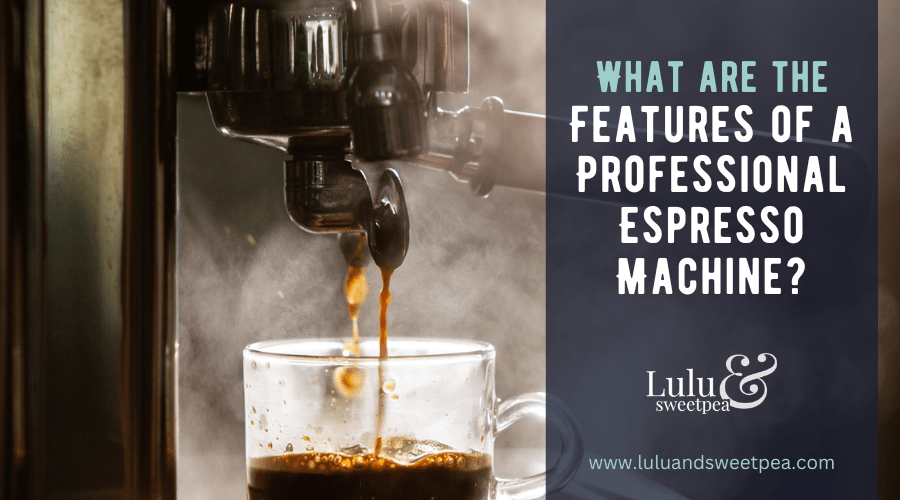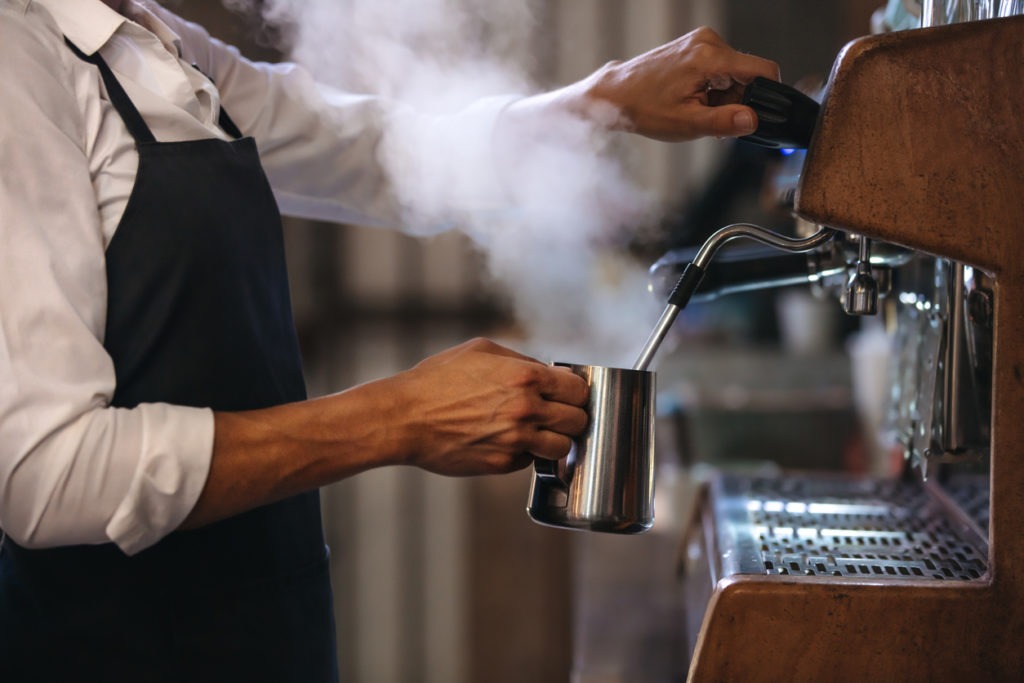Offices and houses are increasingly installing professional espresso machines. While having access to speciality coffee at work or without having to leave the house is fantastic, how much do you actually know about what happens when you dial in a shot? With so many options, it’s easy to get sidetracked by the extra features each coffee machine provides. But which of these features actually affect the flavor of your brew? And what else can you live without?
We have listed a few of the features that espresso machines typically include and what they are for to help you know and better understand the features of a professional espresso machine.
Basic Features of a Professional Espresso Machine
There are several basic features that all espresso machines will have, you must choose which of these is best for you when selecting a machine.
1. Pressurization Method
To be able to make authentic espresso, you have to extract it under pressure. But there are various approaches that can be taken to achieve the ultimate result. Although lever, steam, and pump espresso makers are available, pump machines are the most typical for home or commercial use.
2. Steam-Driven Machines
Steam-driven machines are inexpensive, compact, and simple, making them easy to operate and maintain. But how do they function? Water is heated to boiling point and steam is produced inside an airtight tank. Pressure is created, which pushes the water into the coffee through a reservoir. It resembles what takes place in a moka pot on the stove.
The drawback of steam-powered machines is that their maximum pressure is just 1-1.5 bars. 9 bars of pressure is the ideal pressure for an espresso shot. But if you want a quick espresso without spending a lot of time or money, steam-driven machines work great. You might be able to figure out how to get a well-brewed cup without over-extraction by experimenting with grind size.
3. Lever-Driven Machines
To draw a shot on a lever-driven machine, you need to be physically strong. There are two kinds of lever-driven machines: spring-loaded and manual.
The lever’s horizontal resting position makes a manual machine easy to identify. An opening in the brewing chamber allows warm water to be drawn in when it is raised, saturating the grounds. When the barista lowers the lever, they can adjust the pre-infusion, flow rate, and pressure.
When the internal spring is relaxed in spring-driven devices, the lever points upward. The spring contracts when the lever is pulled downward, lifting the piston. This makes room for water to enter the brewing chamber. As the spring releases its strain, the lever rises once more. The espresso is extracted as a result of the piston forcing the water downward.
The barista is in control when using lever machines. With lever-driven machines, I t is easy to make a specific coffee that requires a longer pre-infusion or extracts more flavor with a specific pressure profile. Lever-driven machines support exploration and innovation.
4. Pump-Driven Machines
Since the 1960s, pump-driven espresso machines have dominated the industry. They function by pumping preheated water through the brew chamber and into a coffee bed using an electrical motor. It is easy to create consistently high pressure with an electrical pump. The three primary types of pump-driven machines available today are semi-automatic, automatic, and super-automatic. There are variants within each, such as different types of pumps, different numbers of boilers, and computer-aided programming.
5. Automation Level
There are three main levels of automation that pump-driven espresso machines offer: semi-automatic, automatic, and super-automatic. The level of automation depends on your preference in the preparation of your espresso.
6. Semi-Automatic Machines
Automated systems are used in semi-automatic machines to push water through the grouphead. The barista is in charge of tamping, grinding, and controlling the length of the extraction process.
They are a suitable middle ground between manual oversight and mechanical precision. Although the shot is within your control, it is more difficult to mess up because the water pressure and temperature are controlled.
7. Automatic Machines
These resemble semi-automatic machines greatly, but they also automatically stop the water flow. You won’t need to stand over each espresso to prevent overflow because this guarantees a constant volume in every shot. Cafés also utilize automatic espresso equipment.
8. Super-Automatic Machines
Super-automatics accomplish everything. The machine grinds the beans and loads the ground coffee into the portafilter by measuring, filling, and tamping it. Push a button, and you’ll always get a consistent shot. Although some machines allow you to change the grind size and timing, there isn’t much room for creativity. As opposed to coffee shops, they are typically utilized in homes and offices.
9. Single/Double Boiler
If you enjoy espresso-based milk beverages like lattes or cappuccinos, you must have this feature. Single boiler espresso machines, which are the most affordable models, use the same heat source for both brewing and boiling milk. Hence, you cannot immediately transition from one to the other.
A double boiler has two heaters, each of which is regulated at the ideal temperature for the task at hand. Thus, you can pull a coffee and start to foam the milk right away.
Add-on Features of a Professional Espresso Machine
With the advent of innovative convenience, additional features have been added and built-in with professional espresso machines. Although not an essential feature, it is undeniably very helpful.
1. Electronic Displays
There are several machines without any additional displays but temperature gauges. They fail to inform you of pressure. How long the shot has been pulling is not disclosed. Naturally, these machines are less expensive and capable of producing excellent shots, but it can be more difficult without those built-in tools available to you. You must use a timer or your phone to time the shots in the absence of a display (which is frequently combined with temperature control to the degree). Although it is helpful, built-in displays are not necessary for excellent coffee.
2. Tea Water Dispenser
Many pump-driven machines have an additional water spout. This additional water spout is for filling mugs with water for teabags and is frequently referred to as a “tea water dispenser.” These extra spouts are fantastic for warming up mugs in a cafe, but they aren’t all that handy at home on a regular basis. If your espresso machine lacks this additional feature, it isn’t that much of a bummer.
3. Plumbing and Water Reservoir
It can be quite practical to connect your espresso machine to the water line if you have access to plumbing. Your water line feeds the machine for you, so you don’t have to worry about running out of water and overheating your machine. However, the majority of us don’t actually have that specific area. The majority of us will eventually move the machine after sticking it anywhere we can. A water reservoir machine makes more sense in that situation because you can move it around the kitchen over time, it’s considerably less expensive, and it’s much easier to set up.
Although it is convenient to connect your equipment to the plumbing, most people find it impractical.
Conclusion
As you can see, there are a variety of espresso machines available, from the most basic to the most advanced and feature-rich. But try not to become overwhelmed by the options. Finding something that matches your budget after determining which features are most important to you is the best course of action.
If you need help in choosing an espresso coffee maker, our Guide to Selecting an Espresso Coffee Maker might help you.


